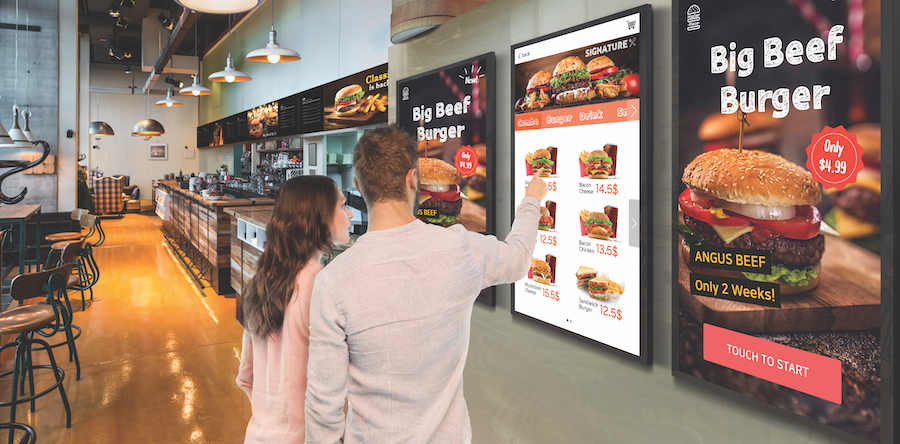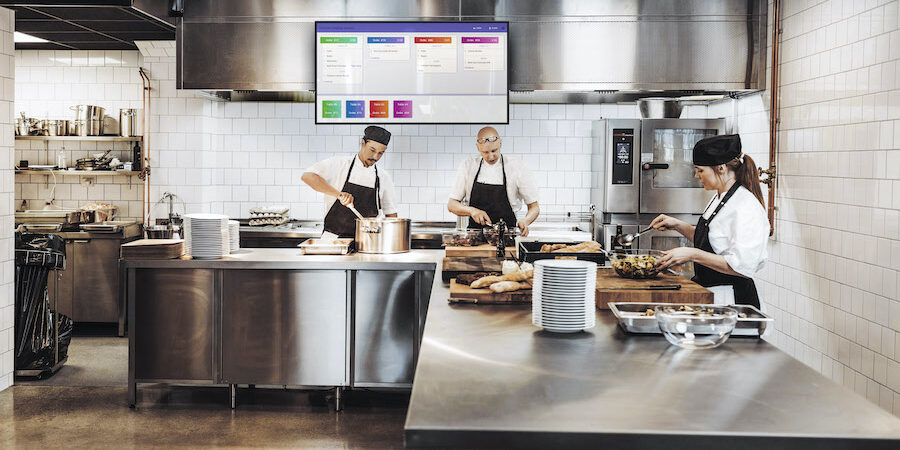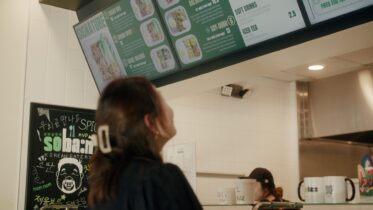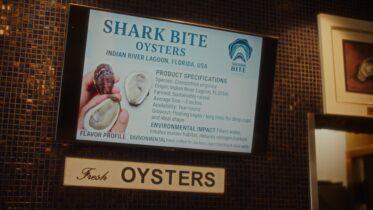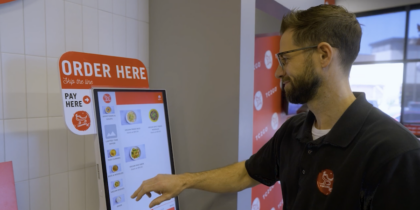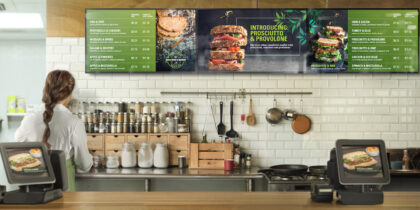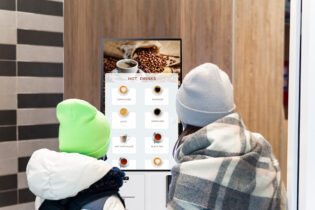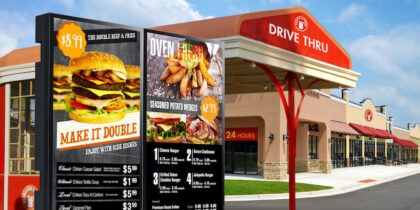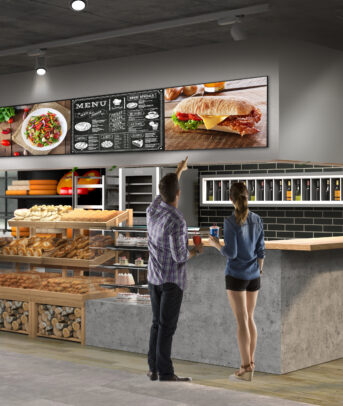Outdoor-ready digital displays have become essential components for quick-service restaurants (QSRs). These technologically advanced screens do more than just provide bright and vivid eye candy, nowadays. Today’s leading digital menu boards for restaurants can also attract and direct customers, shorten lines, accelerate orders, promote specials and boost sales.
That’s why major QSRs have made digital signage a standard part of their service delivery, both in-store and in the drive-thru, where up to 75% of QSR sales occur.
Here are six ways digital menu boards for restaurants enhance the QSR business and customer experience.
1. Raising awareness
When motorists enter a QSR drive-thru, they may know precisely what they want to order — or they may want to try something new instead of or in addition to their typical order. Displays positioned along the drive-thru lane, ahead of the ordering position, can raise awareness of new menu options, specials and other items that deliver higher margins for owner-operators.
Elevate your QSR by empowering employees
Explore how key technologies can help QSRs stay competitive and mitigate growing industry problems. Download Now
Typically oriented like posters, these screens promote items that might otherwise be lost among the many options listed on the menu at the order station, where many drive-thru customers feel rushed to make decisions and not hold up the line.
2. The right menu
Many QSR operations open early and stay open late — even 24/7. They can display menus depending on what is available during certain times. For example, they might offer a specific breakfast menu in the morning, lunch menu mid-day, dinner menu in the evening and late-night menu at night. Because some of those items may be unavailable after certain hours, there’s a possibility of disappointing customers if they can’t get something they see, especially if menus are static and unchangeable.
Digital menus for QSRs solve that problem by allowing easy changes any time of day via restaurant content management system software, such as Samsung VXT. This allows you to daypart menus so breakfast items disappear from screens at a specified time or when certain ingredients run out. Inside the store, self-service kiosks can do the same and improve the customer experience by allowing customers to make an order and complete the transaction at their convenience without face-to-face interaction. Operators can also adjust menus to highlight promotions and upsell products, increasing basket size.
3. Instant, ensured accuracy
A mix-up in an order can negatively impact a QSR. Not only does it make such a bad impression on the customer that they may not return, but efforts to correct the error hold up the line for the customers waiting behind, thereby impacting the customer experience for all. Indeed, 20% of respondents in one survey said they wouldn’t order from the restaurant again after an inaccurate order.
Digital displays offer a powerful tool to reduce inaccuracies in orders, and the benefits are already visible. One study of digital displays at McDonald’s showed an increase in accuracy of 15%. Considering the average accuracy rate of major chains is 86%, a digital display can effectively close the gap, leading to higher customer satisfaction.
4. Curbside pickup
Order-ahead and off-premises dining are now the norm in the QSR and fast-casual restaurant sectors. Curbside pickup is a key element of this and offers the same level of speed and convenience without reconfiguring the restaurant’s physical footprint.
To make it work, motorists need to know where to pull up and what to do. High-brightness displays in restaurant windows or weather-protected outdoor enclosures with self-service kiosks can relay these instructions clearly and vividly, making it easy for all. When tied into order and management systems, displays can also provide real-time order updates, so customers know when to expect their curbside order.
5. Faster service
A main priority for QSR operators is throughput — the speed at which orders are processed and delivered. During busy hours like lunchtime, particularly in drive-thrus, faster service means more orders and revenue, and shorter lines lower customers’ likelihood of going elsewhere.
Digital displays have a large role in speeding service. Paper signs need to show every item available, from breakfast through late night. Digital displays can remove items no longer available or being offered, reducing the options diners need to scan through and speeding their decision-making. AI and technology databases can increase speed even more, such as by using sensors that scan drive-thru motorists and optimize menus to match their predictive characteristics.
6. Tailored, targeted messaging
Machine learning-based tools — like license plate readers and pattern detection of vehicle types — analyze approaching customers and show them optimized menus. For example, if sales and loyalty data show, for example, that people in half-ton trucks tend to order combos, then the most attractive combo options are dynamically displayed on screens, increasing the speed of decision. That’s why QSRs like Wendy’s are spending millions on digital menu board enhancements that include AI.
Visual beacons drive sales
QSR outdoor digital signage is a mission-critical aspect of the modern drive-thru that connects to many of the industry’s leading trends. The increasing suite of tools and capabilities makes it almost indispensable to winning a larger customer share, burnishing the brand image, and expanding profits.
Learn more about why digital signage has become essential to the QSR industry in this free white paper. And explore Samsung’s range of indoor and outdoor QSR solutions designed to make the restaurant and in-store experience as compelling as possible.
